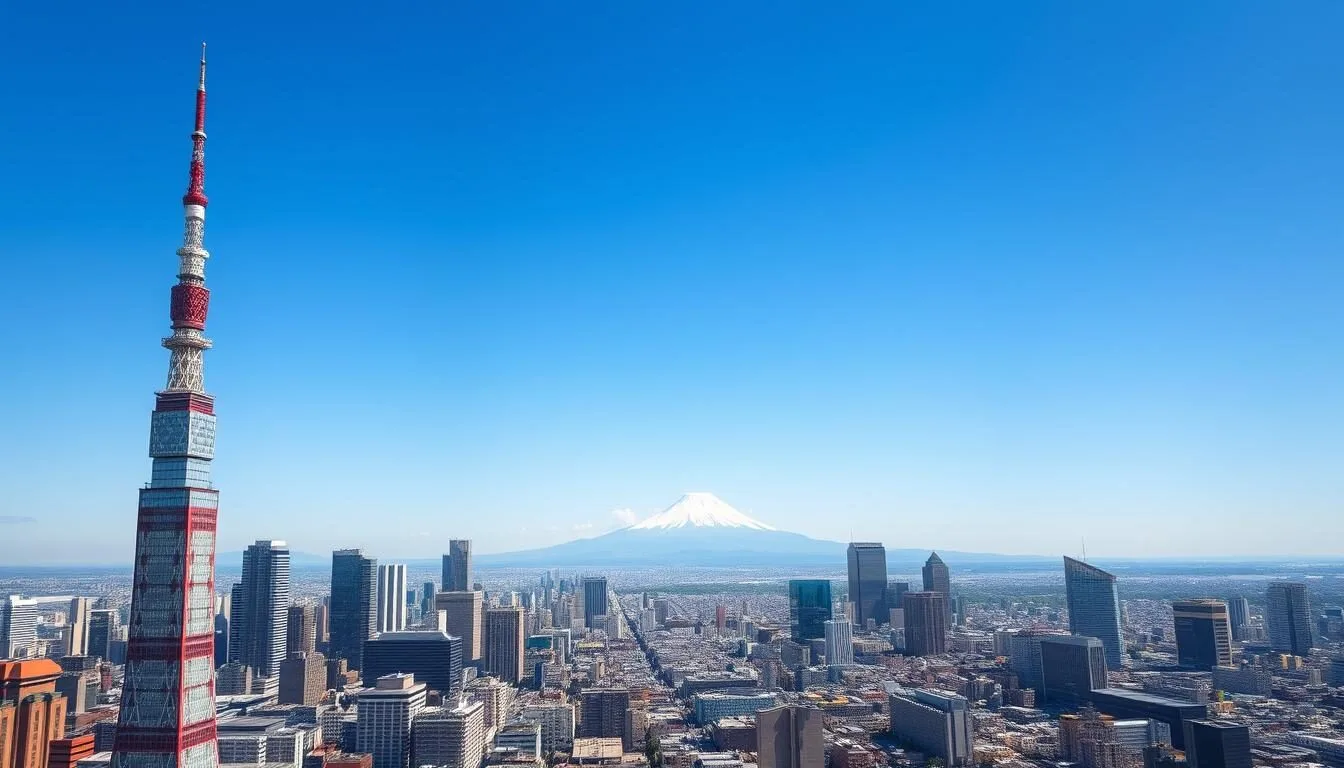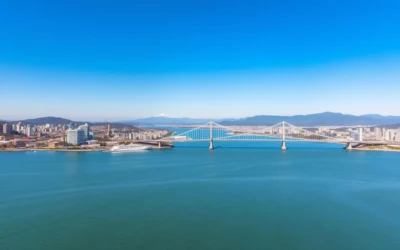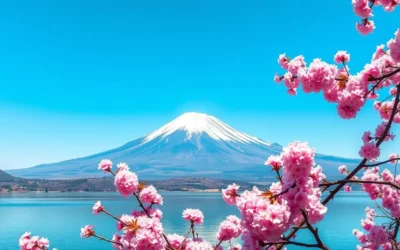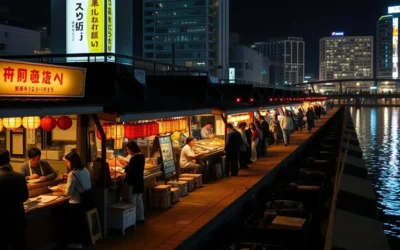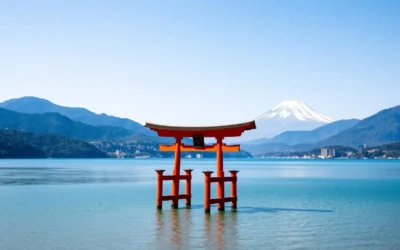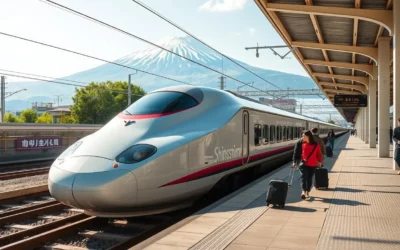✓ Accommodations✓ Flights✓ Rental Cars✓ Tours & Activities
Did you know Tokyo has more Michelin-starred restaurants than any other city in the world? With over 200 starred establishments, this culinary paradise outshines even Paris. But Tokyo’s allure extends far beyond its exceptional dining scene. From ancient temples nestled between skyscrapers to the world’s busiest pedestrian crossing, Tokyo masterfully blends centuries-old traditions with cutting-edge innovation. Whether you’re seeking cultural immersion, technological wonders, or unforgettable culinary experiences, this vibrant metropolis delivers at every turn.
Getting to Tokyo
Tokyo is served by two major international airports: Narita International Airport (NRT) and Haneda Airport (HND). Narita handles most international flights but is located about 60km from central Tokyo, while Haneda is closer to the city center (about 15km) and has increased its international flight capacity in recent years.
From Narita Airport
Several convenient options connect Narita to central Tokyo:
- Narita Express (N’EX): The fastest option, taking approximately 60 minutes to Tokyo Station. Tickets cost around ¥3,070 ($21).
- Keisei Skyliner: Another express train service that reaches Ueno Station in about 40 minutes. Tickets cost around ¥2,570 ($18).
- Airport Limousine Bus: Offers direct service to major hotels and stations. Travel time varies from 75-120 minutes depending on traffic. Tickets cost around ¥3,100 ($21).
From Haneda Airport
Getting to central Tokyo from Haneda is quicker and less expensive:
- Tokyo Monorail: Connects to Hamamatsucho Station in about 15 minutes. Tickets cost ¥500 ($3.50).
- Keikyu Line: Reaches Shinagawa Station in approximately 15 minutes. Tickets cost ¥410 ($2.80).
- Airport Limousine Bus: Serves major hotels and stations. Travel time is 30-45 minutes depending on traffic. Tickets cost around ¥1,100 ($7.50).
Ready to Book Your Flight to Tokyo?
Find the best deals on flights to Tokyo from hundreds of airlines and travel agencies.
Best Time to Visit Tokyo
Tokyo experiences four distinct seasons, each offering a unique perspective on the city. Your ideal visiting time depends on what experiences you’re seeking and your tolerance for crowds and weather conditions.

Spring (March to May)
Spring is arguably the most popular time to visit Tokyo, thanks to the famous cherry blossom season. From late March to early April, the city transforms as sakura trees burst into delicate pink blooms. Major viewing spots like Ueno Park, Shinjuku Gyoen, and the Meguro River become packed with visitors participating in hanami (flower viewing parties). Temperatures are mild, ranging from 10-20°C (50-68°F), making it comfortable for sightseeing.
Summer (June to August)
Summer brings hot and humid conditions, with temperatures often exceeding 30°C (86°F). This season coincides with numerous vibrant festivals (matsuri) and spectacular fireworks displays (hanabi). If you visit during summer, be prepared for occasional rain, especially during the June rainy season, and plan indoor activities during the hottest parts of the day.
Fall (September to November)
Fall rivals spring in popularity as Tokyo’s parks and gardens display stunning autumn foliage. The koyo (fall colors) typically peak in late November to early December. Weather is generally pleasant with temperatures ranging from 15-25°C (59-77°F), making it ideal for exploring the city on foot. This season also tends to have fewer tourists than spring.
Winter (December to February)
Winter in Tokyo is relatively mild compared to many Western countries, with temperatures rarely dropping below freezing. Daytime temperatures average around 10°C (50°F). The city dazzles with elaborate illuminations and light displays, particularly around Christmas and New Year. This is also the least crowded season for tourists, offering better rates on accommodations.
Insider Tip: If cherry blossom viewing is a priority, monitor the Japan Meteorological Corporation’s cherry blossom forecast, which is usually released in January, to plan your trip accordingly. The blooming period typically lasts only 1-2 weeks and exact timing varies each year.
Getting Around Tokyo
Tokyo’s public transportation system is renowned for its efficiency, cleanliness, and punctuality. While the network might seem overwhelming at first, it’s actually quite user-friendly once you understand the basics.
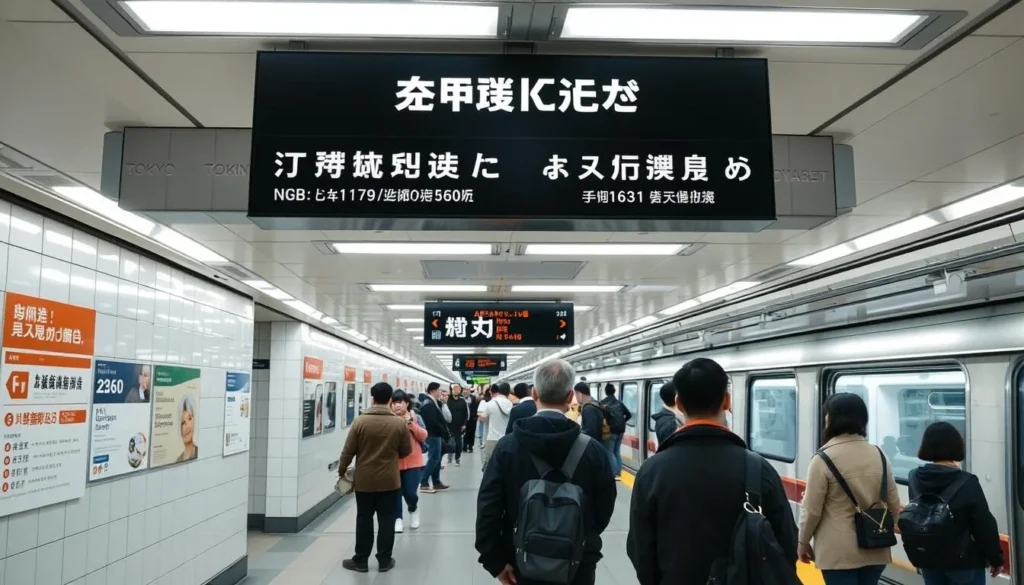
Subway and Trains
The backbone of Tokyo’s transportation system consists of:
- Tokyo Metro (9 lines): Covers most of central Tokyo
- Toei Subway (4 lines): Complements the Metro network
- JR Lines: Including the convenient Yamanote Line that loops around central Tokyo
All stations have signs in English, and most trains announce stops in both Japanese and English. Station maps are color-coded and numbered, making navigation straightforward even if you don’t speak Japanese.
IC Cards: Suica and Pasmo
The easiest way to use public transportation is with an IC card (Suica or Pasmo). These rechargeable cards work on virtually all trains, subways, and buses in Tokyo and many other Japanese cities. Simply tap the card on the reader when entering and exiting stations. IC cards can also be used for purchases at convenience stores, vending machines, and many restaurants.
You can purchase these cards at any major station for a ¥500 deposit (refundable when you return the card) plus your desired amount of credit.
Taxis
Taxis in Tokyo are clean, safe, and plentiful. They’re convenient for short distances, late-night travel, or when carrying heavy luggage. Fares start at around ¥410-¥500 for the first 1.052km and increase incrementally thereafter. Most taxis accept credit cards, but it’s always good to have cash on hand.
Note that taxi doors open and close automatically—don’t try to open or close them yourself. While many drivers don’t speak English, showing them your destination written in Japanese (or on a map) usually works well.
Rental Cars
Renting a car in Tokyo is generally unnecessary and can be challenging due to traffic congestion, limited parking, and the complexity of navigating Tokyo’s streets. However, if you’re planning to explore areas outside the city, a rental car might be useful.
Need a Rental Car for Exploring Beyond Tokyo?
Compare prices from top rental companies and find the perfect vehicle for your Japan adventure.
Money-Saving Tip: If you’re planning to use the JR lines frequently, consider purchasing a Tokyo Wide Pass, which offers unlimited travel on JR East trains in the greater Tokyo area for 3 days at ¥10,180 ($70). This is particularly valuable if you’re planning day trips outside the city.
Where to Stay in Tokyo
Tokyo is composed of 23 special wards, each with its own character and attractions. Choosing the right neighborhood for your stay can significantly enhance your Tokyo experience. Here’s a breakdown of the most popular areas for visitors:
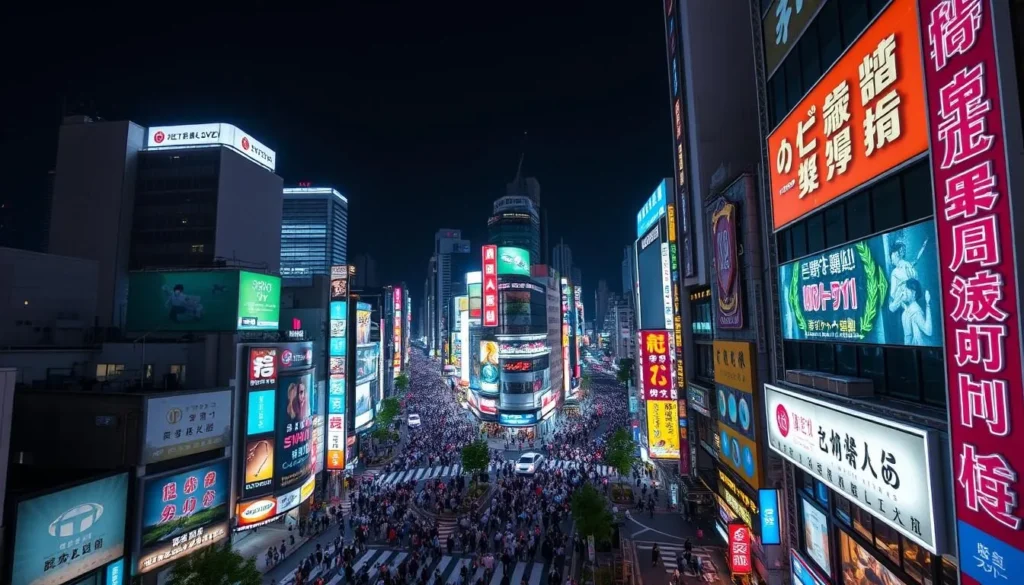
Shinjuku
Perfect for: First-time visitors, nightlife enthusiasts, shoppers
Shinjuku is Tokyo’s bustling entertainment hub and home to the world’s busiest train station. This district offers everything from luxury department stores and electronics shops to narrow alleys filled with tiny bars and restaurants. The area around Kabukicho is famous for its vibrant nightlife, while the western side features the serene Shinjuku Gyoen National Garden.
Accommodation options range from luxury hotels like Park Hyatt Tokyo (featured in “Lost in Translation”) to budget-friendly business hotels and hostels.
Shibuya
Perfect for: Young travelers, fashion enthusiasts, people-watchers
Known for the famous Shibuya Crossing (the world’s busiest pedestrian intersection), this district is the epicenter of youth culture and fashion in Tokyo. The area is packed with clothing stores, trendy cafes, and entertainment venues. It’s also home to the loyal dog Hachiko’s statue, a popular meeting point.
Shibuya offers a range of mid-range to upscale accommodations, with several boutique hotels that cater to style-conscious travelers.
Asakusa
Perfect for: Culture seekers, budget travelers, those seeking traditional Japan
Asakusa provides a glimpse into old Tokyo with its historic temples, traditional shops, and relaxed atmosphere. The area is centered around Sensō-ji, Tokyo’s oldest temple, and the Nakamise Shopping Street leading to it. The nearby Tokyo Skytree offers panoramic views of the city.
This district features many ryokans (traditional Japanese inns) and budget-friendly accommodations, making it popular with travelers looking to experience Japanese culture without breaking the bank.
Ginza
Perfect for: Luxury travelers, fine dining enthusiasts, shoppers
Ginza is Tokyo’s most upscale shopping district, lined with flagship stores of international brands, department stores, and art galleries. The area is also known for its exceptional dining scene, including many Michelin-starred restaurants. On weekends, the main street becomes pedestrian-only, creating a pleasant atmosphere for strolling.
Accommodations in Ginza tend to be high-end, with several luxury hotels offering impeccable service.
Find Your Perfect Tokyo Accommodation
From traditional ryokans to luxury hotels, find the ideal place to stay for your Tokyo adventure.
Top Attractions in Tokyo
Tokyo offers an incredible array of attractions that blend the traditional and ultramodern. Here are the must-visit spots that should be on every traveler’s itinerary:
Senso-ji Temple
Tokyo’s oldest and most significant Buddhist temple, Senso-ji in Asakusa dates back to 645 AD. The approach to the temple along Nakamise Shopping Street is lined with vendors selling traditional snacks and souvenirs. Don’t miss the massive red paper lantern at the Kaminarimon (Thunder Gate) and the five-story pagoda. The temple is particularly atmospheric in the early morning before the crowds arrive or in the evening when it’s beautifully illuminated.
Visitor Tip: Participate in the traditional purification ritual by washing your hands and mouth with water from the fountain near the entrance, and try omikuji (fortune telling paper strips) for ¥100.
Shibuya Crossing
Often called the world’s busiest pedestrian intersection, Shibuya Crossing is a must-see Tokyo experience. When the traffic lights turn red, up to 3,000 people cross from all directions in a chaotic yet orderly scramble. The best views are from the second-floor Starbucks in the Tsutaya building or from the newly opened Shibuya Sky observation deck at Shibuya Scramble Square.

Tokyo Skytree
Standing at 634 meters, Tokyo Skytree is the tallest structure in Japan and offers breathtaking panoramic views of the sprawling metropolis. The main observation decks are located at 350m and 450m above ground. On clear days, you can even spot Mount Fuji in the distance. The complex at the base includes shopping malls, restaurants, and an aquarium.
Meiji Shrine
Located in a lush forest in the heart of Tokyo, Meiji Shrine is dedicated to Emperor Meiji and Empress Shoken. The 100,000 trees that form the forest were donated from across Japan when the shrine was built. The serene atmosphere makes it hard to believe you’re in the center of one of the world’s largest cities. Visit on a Sunday for a chance to witness a traditional Japanese wedding procession.
teamLab Borderless
This groundbreaking digital art museum creates an immersive, borderless world where art moves freely, influencing and sometimes merging with other works. Interactive light installations respond to visitor movements, creating a unique experience every time. The museum relocated from Odaiba to Azabudai Hills in central Tokyo in 2023, with an even more impressive space.
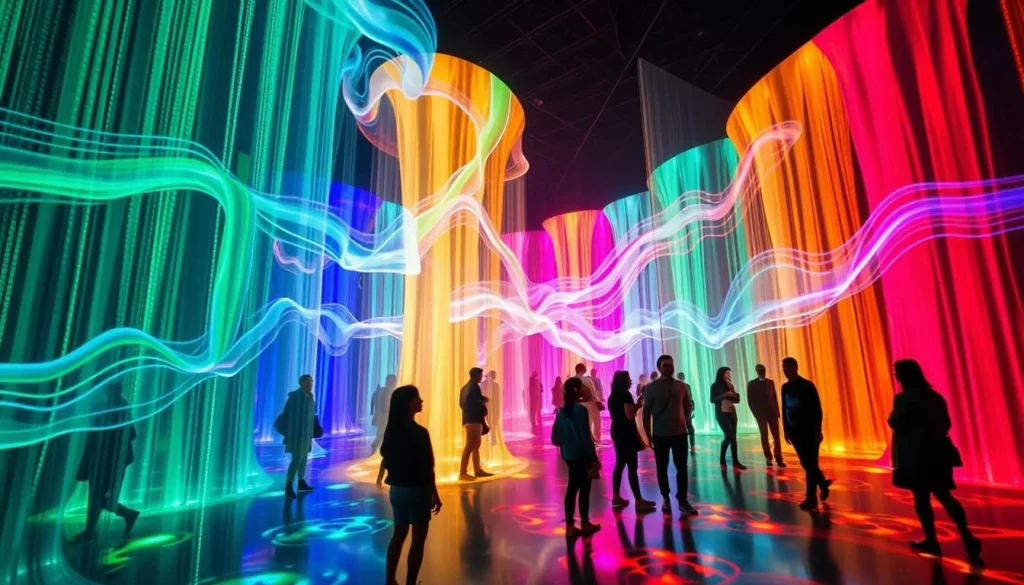
Skip the Lines at Tokyo’s Top Attractions
Book your tickets in advance and make the most of your time in Tokyo.
Book Attraction Tickets
Unique Local Experiences
Beyond the major attractions, Tokyo offers countless opportunities to immerse yourself in Japanese culture and daily life. Here are some experiences that will give you a deeper understanding of the city:
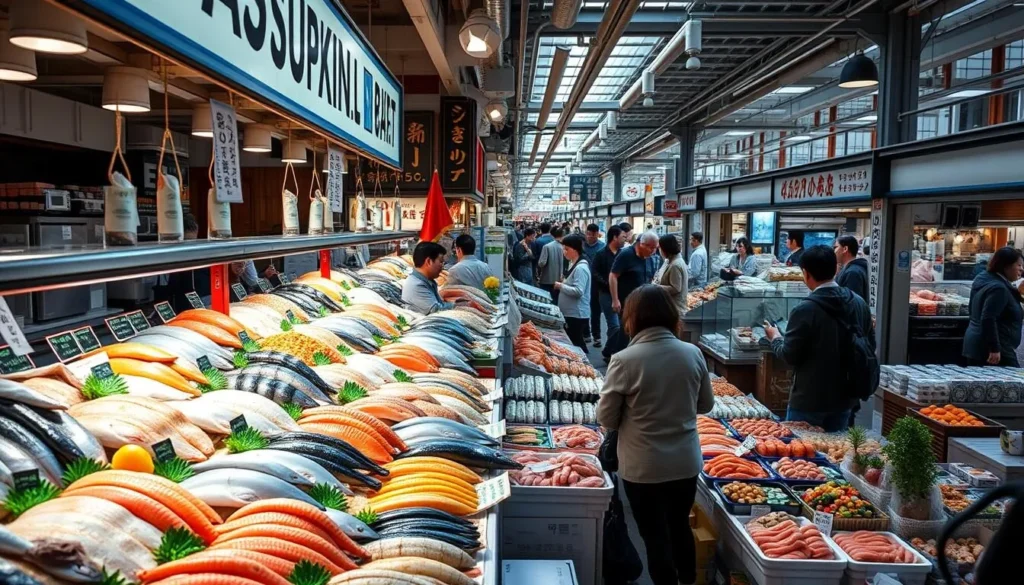
Explore Tsukiji Outer Market
While the famous Tsukiji wholesale fish market relocated to Toyosu in 2018, the outer market remains a food lover’s paradise. Wander through narrow alleys lined with vendors selling fresh seafood, produce, kitchen tools, and street food. Don’t miss trying fresh sushi for breakfast—it doesn’t get any fresher than this. Arrive early (around 8-9am) for the best experience, as many shops close by early afternoon.
Experience a Traditional Tea Ceremony
Participate in a Japanese tea ceremony (chado or sado) to understand this important cultural ritual centered around the preparation and serving of matcha (powdered green tea). Several venues in Tokyo offer experiences for visitors, including Happo-en Garden and the tea houses in Hamarikyu Gardens. These ceremonies typically last 45-90 minutes and offer insight into Japanese aesthetics and mindfulness.
Visit a Themed Café
Tokyo is famous for its quirky themed cafés. Animal lovers can visit cat, owl, hedgehog, or even reptile cafés. Pop culture enthusiasts might enjoy the Pokémon Café, Gundam Café, or numerous anime-themed establishments. For something uniquely Japanese, try a maid café in Akihabara, where waitresses dressed as anime-style maids serve food with cutesy performances.

Sing Karaoke
Karaoke is a beloved pastime in Japan, and Tokyo offers countless karaoke establishments where you can rent a private room with friends. Major chains like Big Echo and Karaoke-kan have English song selections and all-you-can-drink packages. Even if you’re shy about singing, the experience of belting out tunes in a private room is quintessentially Japanese.
Soak in a Public Bath
Visit a sento (public bath) or onsen (hot spring bath) for a relaxing and authentic Japanese experience. Facilities range from simple neighborhood bathhouses to elaborate spa complexes like Oedo Onsen Monogatari in Odaiba. Remember to familiarize yourself with bath etiquette before going: wash thoroughly before entering the bath, and note that most facilities prohibit tattoos (though some are becoming more accepting of small tattoos on foreign visitors).
Discover Authentic Tokyo Experiences
From cooking classes to guided cultural tours, find unique activities that go beyond the typical tourist attractions.
Browse Cultural Experiences
Tokyo’s Incredible Food Scene
Tokyo is a gastronomic paradise with more Michelin-starred restaurants than any other city in the world. From humble street food to exquisite fine dining, the city offers endless culinary adventures:
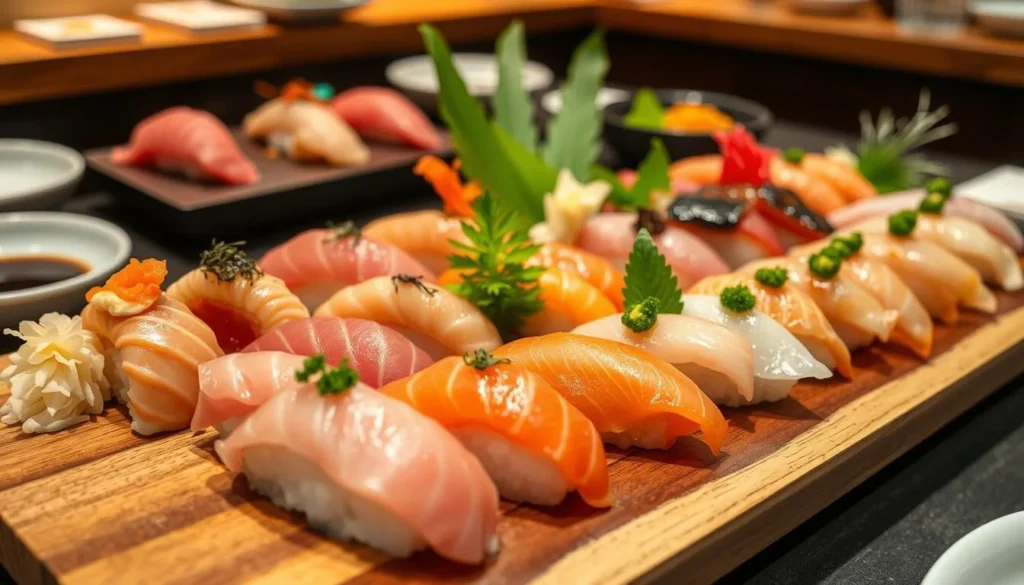
Must-Try Japanese Dishes
- Sushi and Sashimi: While available worldwide, nothing compares to sushi in Tokyo. For an authentic experience, try a traditional sushi-ya where the chef prepares pieces one by one, or visit the standing sushi bars in Tokyo Station for quality sushi at reasonable prices.
- Ramen: Each region of Japan has its own ramen style. Tokyo is known for shoyu (soy sauce) ramen with a clear, flavorful broth. Popular chains include Ichiran (known for tonkotsu ramen) and Afuri (famous for yuzu-infused ramen).
- Tempura: Seafood and vegetables coated in light batter and deep-fried to perfection. For an exceptional tempura experience, try tempura-specialized restaurants like Tempura Kondo or Tenmatsu.
- Yakitori: Skewered and grilled chicken parts, typically enjoyed with beer at izakaya (Japanese pubs). Omoide Yokocho (Memory Lane) in Shinjuku is famous for its tiny yakitori stalls.
- Monjayaki: A Tokyo specialty similar to okonomiyaki but with a more liquid consistency, cooked on a hot iron griddle at your table. The Tsukishima area is known as “Monja Street” for its concentration of monjayaki restaurants.
Dining Experiences
Beyond specific dishes, Tokyo offers unique dining experiences:
- Department Store Food Halls: Known as depachika, these basement food floors offer an astounding variety of prepared foods, sweets, and international delicacies. Isetan in Shinjuku and Takashimaya in Nihonbashi have particularly impressive selections.
- Izakaya: These Japanese pubs are perfect for sampling a variety of small dishes while enjoying sake or beer. Golden Gai in Shinjuku features over 200 tiny bars and izakaya packed into a small area.
- Conveyor Belt Sushi: Called kaiten-zushi, these restaurants offer plates of sushi that travel past diners on a conveyor belt. It’s a fun, affordable way to try different types of sushi.
- Robot Restaurant: While more about entertainment than food, this Shinjuku institution offers a wild show with giant robots, dancers, and over-the-top performances alongside simple bento box meals.
Dining Etiquette Tip: Tipping is not customary in Japan and can even cause confusion. Instead, show appreciation with a sincere “gochisosama deshita” (thank you for the meal) when finishing. Also, slurping noodles is not only acceptable but considered a compliment to the chef!
Shopping in Tokyo
Tokyo is a shopper’s paradise, offering everything from high-end designer boutiques to quirky specialty stores and traditional crafts. Each neighborhood has its own shopping personality:
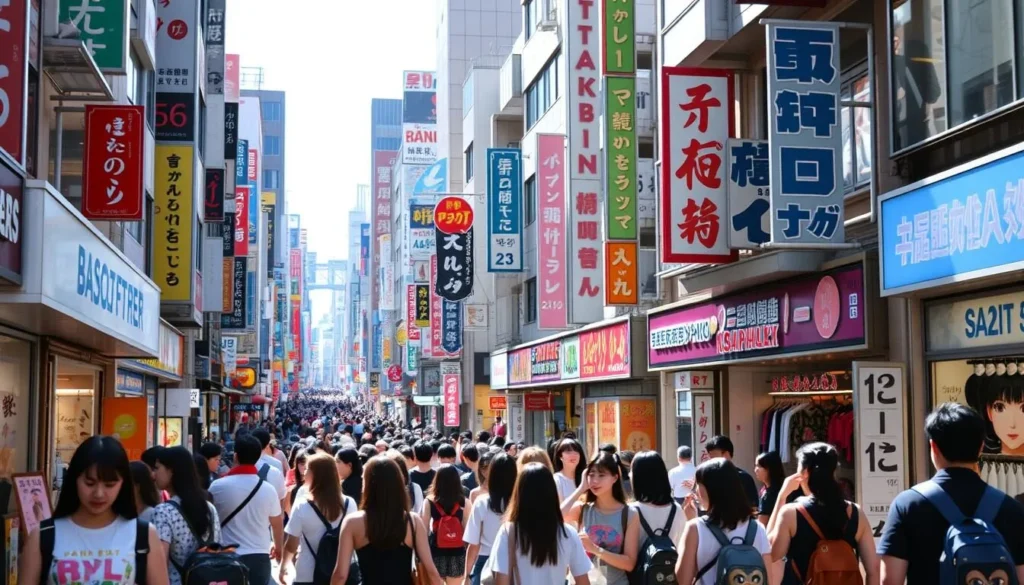
Fashion Districts
- Ginza: Tokyo’s most upscale shopping district, home to flagship stores of international luxury brands, the massive Mitsukoshi department store, and specialty shops selling traditional Japanese crafts.
- Harajuku: The epicenter of youth fashion, particularly along Takeshita Street. Expect colorful, trendy clothing stores, vintage shops, and quirky accessories. The nearby Omotesando area offers more upscale boutiques in stunning architectural settings.
- Shibuya: Popular with young adults, featuring large fashion complexes like Shibuya 109 alongside international brands and unique Japanese labels.
Electronics and Anime
- Akihabara: Known as “Electric Town,” this district is paradise for electronics enthusiasts and otaku (anime and manga fans). Browse multi-story electronics stores like Yodobashi Camera, anime merchandise shops, and retro video game stores.
- Nakano Broadway: A shopping mall dedicated to anime, manga, and collectibles, with dozens of specialized stores selling everything from vintage toys to rare comics.
Traditional Crafts and Souvenirs
- Asakusa: The streets around Senso-ji Temple are lined with shops selling traditional crafts, Japanese sweets, and souvenirs.
- Kappabashi Street: Known as “Kitchen Town,” this street specializes in restaurant supplies, including high-quality Japanese knives, beautiful ceramics, and the plastic food models seen in restaurant windows.
- Oriental Bazaar: Located in Omotesando, this store offers a wide range of Japanese souvenirs, from yukata (casual kimono) to ceramics and traditional toys.
Shopping Tip: Foreign visitors can shop tax-free at many stores by showing their passport. Look for the “Tax-Free Shopping” sign, and remember that purchases must be over ¥5,000 but under ¥500,000 to qualify.
Day Trips from Tokyo
While Tokyo offers endless exploration, the surrounding areas provide a refreshing contrast to the urban metropolis. These popular day trips are easily accessible by train:
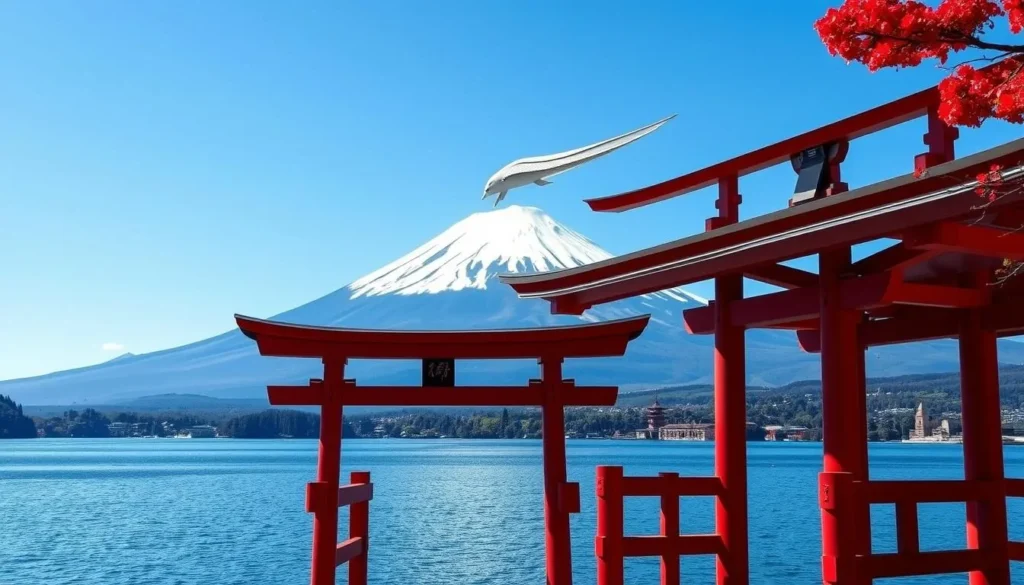
Hakone
Just 90 minutes from Tokyo, Hakone is famous for its hot springs, stunning views of Mount Fuji (on clear days), and unique transportation circuit that includes trains, cable cars, ropeways, and a pirate ship across Lake Ashi. The Hakone Open-Air Museum combines beautiful outdoor sculptures with mountain scenery. For a special experience, stay overnight at a traditional ryokan with private onsen baths.
Kamakura
Often called “Little Kyoto,” this coastal town was Japan’s political center during the Kamakura Shogunate (1185-1333). Just an hour from Tokyo, it’s home to numerous temples and shrines, including the Great Buddha (Daibutsu), a 13-meter-high bronze statue cast in 1252. Hike the trails connecting the temples or relax on the beaches during summer.
Nikko
A UNESCO World Heritage site about two hours from Tokyo, Nikko is known for its lavishly decorated shrines set against a backdrop of beautiful mountains and forests. The Toshogu Shrine, final resting place of Tokugawa Ieyasu (the founder of the Tokugawa Shogunate), features over 5,000 carvings, including the famous “see no evil, speak no evil, hear no evil” monkeys. The area also offers natural attractions like Kegon Falls and Lake Chuzenji.
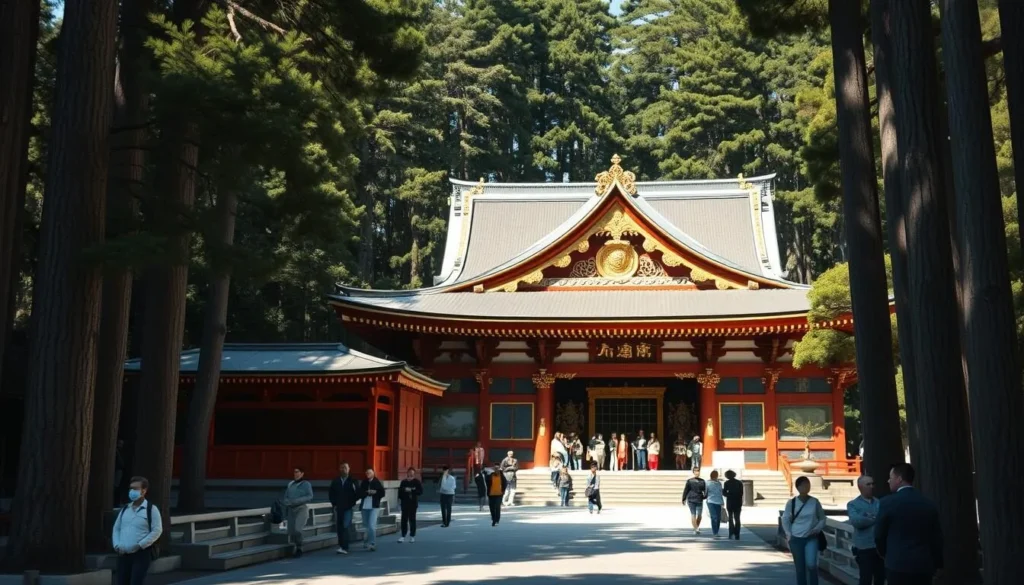
Yokohama
Japan’s second-largest city is just 30 minutes from Tokyo but offers a different atmosphere with its spacious harbor area. Visit Yokohama Chinatown (the largest in Japan), the Cup Noodles Museum, and Minato Mirai 21 with its iconic Ferris wheel and Landmark Tower. The Shin-Yokohama Ramen Museum is a food-themed amusement park recreating Tokyo streets from 1958, with ramen shops from across Japan.
Explore Beyond Tokyo
Discover the beauty of Japan’s countryside with guided day trips from Tokyo.
Book a Day Trip
Practical Tips for Visiting Tokyo
Make your Tokyo trip smoother with these essential tips:
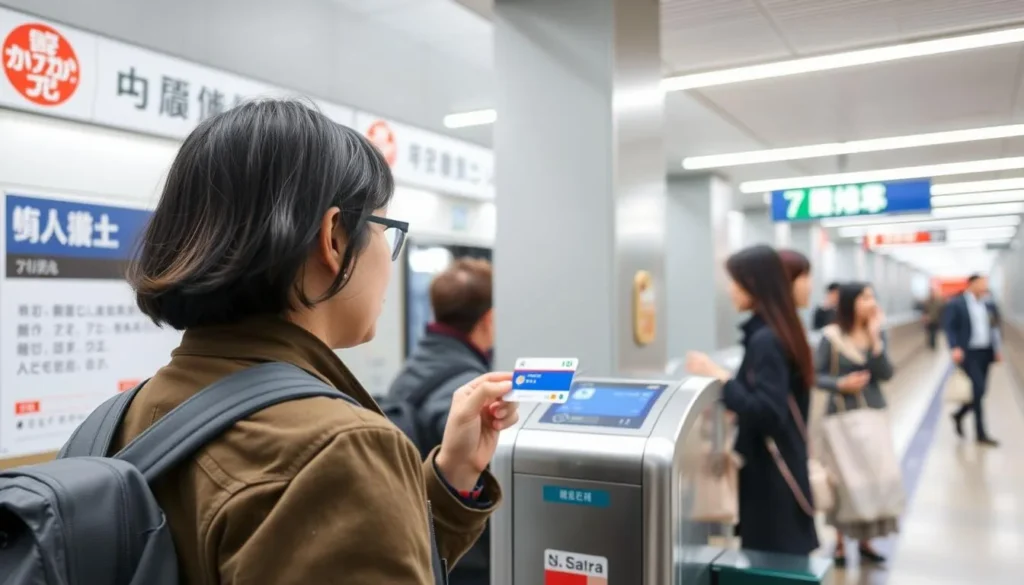
Money and Payments
- Cash is King: While credit card acceptance has improved, many smaller restaurants, shops, and attractions still operate on cash only. Always carry sufficient yen.
- ATMs: Not all ATMs accept foreign cards. Your best options are ATMs at 7-Eleven convenience stores, post offices, and international banks.
- No Tipping: Tipping is not customary in Japan and can cause confusion. Service charges are often included at high-end establishments.
Connectivity
- Pocket WiFi/SIM Card: Renting a pocket WiFi device or purchasing a temporary SIM card is highly recommended for navigation and translation. These can be reserved online and picked up at the airport.
- Free WiFi: Available at many cafes, convenience stores, and public spaces, but coverage and reliability vary.
Language
- Basic Phrases: Learning a few basic Japanese phrases like “arigatou” (thank you) and “sumimasen” (excuse me/sorry) goes a long way.
- Translation Apps: Google Translate’s camera function can translate menus and signs in real-time. The app also allows you to download Japanese for offline use.
Etiquette
- Shoes Off: Remove your shoes when entering homes, ryokans, and some restaurants (especially those with tatami mat floors).
- Quiet Please: Speaking loudly on phones while on public transportation is considered rude. Tokyo is generally a quiet city despite its size.
- Eating on the Go: It’s generally considered impolite to eat while walking on the street. Find a place to sit or stand if you purchase street food.
- Garbage: Public trash cans are surprisingly scarce. Carry a small bag for your trash until you find an appropriate disposal place.
Safety
Tokyo is consistently ranked among the safest major cities in the world. Violent crime is extremely rare, and lost items are often returned intact. Nevertheless, exercise normal precautions and be aware of your surroundings, especially in crowded areas.
Health Tip: Pharmacies (marked with a green cross) can provide over-the-counter medications for minor ailments. For medical emergencies, major hospitals have English-speaking staff, though it’s advisable to have travel insurance that covers medical evacuation.
Seasonal Events and Festivals
Tokyo’s calendar is filled with traditional festivals and seasonal celebrations that offer visitors a glimpse into Japanese culture:
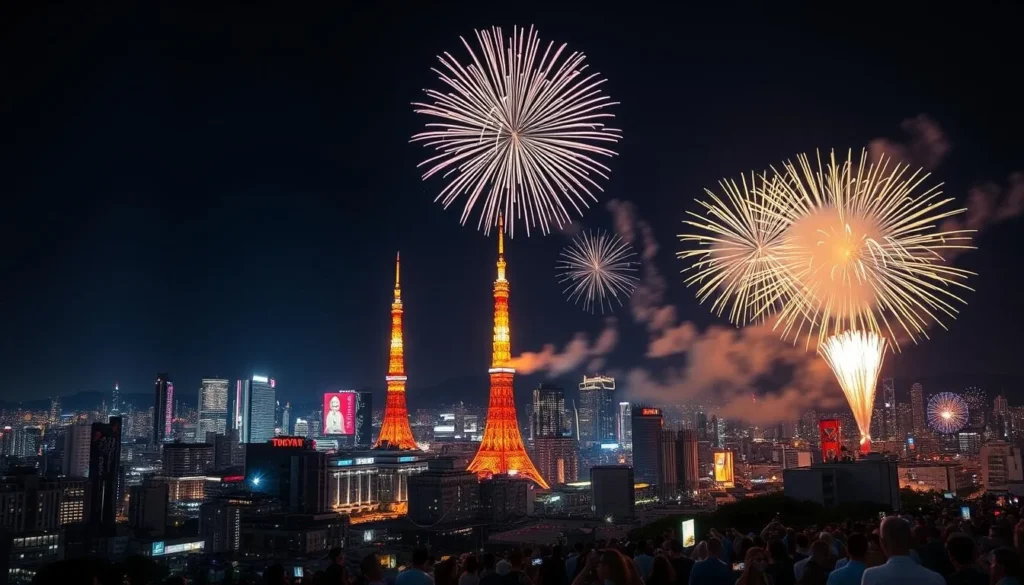
Spring (March-May)
- Cherry Blossom Festivals: Various parks host hanami (flower viewing) events when the cherry blossoms bloom, typically late March to early April. Popular spots include Ueno Park, Shinjuku Gyoen, and the Meguro River.
- Sanja Matsuri: One of Tokyo’s three major Shinto festivals, held at Asakusa Shrine in May. Features mikoshi (portable shrines) carried through the streets by thousands of participants.
Summer (June-August)
- Sumidagawa Fireworks Festival: Held on the last Saturday in July, this spectacular display features over 20,000 fireworks over the Sumida River.
- Bon Odori: Traditional dance festivals held throughout Tokyo in August to honor ancestors. Participants dance in circles around a central stage or tower.
Fall (September-November)
- Tokyo Game Show: One of the world’s largest video game exhibitions, held in September at Makuhari Messe in nearby Chiba.
- Autumn Foliage Viewing: Similar to cherry blossom season, many parks and gardens become popular spots for viewing colorful fall foliage in November and early December.
Winter (December-February)
- Winter Illuminations: Spectacular light displays throughout the city, with notable ones in Roppongi Hills, Tokyo Midtown, and Shibuya.
- New Year (Shogatsu): The most important holiday in Japan. Temples and shrines are packed with visitors performing hatsumode (first shrine visit of the year), and special New Year’s foods are available.
Festival Tip: If your visit coincides with a major festival, book accommodations well in advance as hotels fill up quickly. Also, be prepared for larger crowds at tourist attractions during these periods.
Ready to Experience Tokyo?
Tokyo is a city of captivating contrasts where ancient traditions harmoniously coexist with futuristic innovations. From the serene gardens of the Imperial Palace to the neon-lit streets of Shinjuku, from world-class dining experiences to quirky themed cafés, Tokyo offers endless discoveries for every type of traveler. Whether you’re watching the organized chaos of Shibuya Crossing, finding tranquility in a centuries-old temple, or savoring the perfect piece of sushi, Tokyo will leave you with memories to last a lifetime. The city’s blend of efficiency, hospitality, safety, and fascinating culture makes it one of the world’s most rewarding destinations. So pack your sense of adventure and prepare to be amazed by the wonders of Tokyo!
Start Planning Your Tokyo Adventure Today
Find the best flights, accommodations, and experiences for your unforgettable trip to Tokyo.
—
The above is subject to change.
Check back often to TRAVEL.COM for the latest travel tips and deals.
